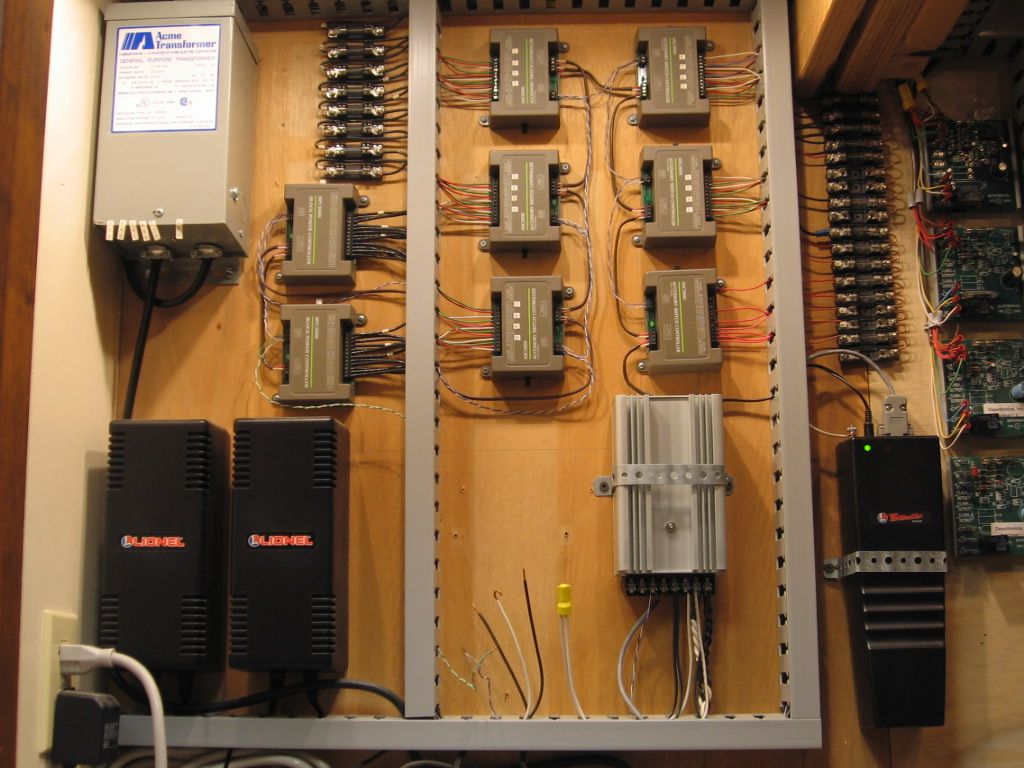If your layout wire runs are very long, in my opinion #14 is about the minimum Bus size to avoid voltage drop. Also, as already noted above, the load is a key issue. How many locomotives, how old--post war or modern, how many lighted passenger cars with incandescent bulbs, lighted accessories, powered track switches????
If using #20 for railpower wire drops from track-to-bus, you should consider frequent drops since #20 is pretty light for railpower load and you might well increase load in the future[#18-#16 is better].If for lighting or accessories only, #20 should be okay for drops to individual units. If you have enough #14 it can be used for both the Hot and Common Bus wire runs. Bare copper for the Common Bus is fine if you want to buy some but #12 or #14 is good.
[folks use the term "ground" for the
Common Return conductor and it has become common usage--but there is no ground on a three rail o-gauge layout unless it is a "ground plane" installed for TMCC operating purposes. On a TMCC Command system the #5 pin in the Command Base serial port connector is an earth ground and can be used for connecting a ground plane but not any way ever connected to railpower--never].
You need to run a Hot[center rail feed] Bus wire for
each power district or separate block or loop[each separate throttle for example].However the single "Layout Common" Bus wire is all that is necessary for any number of power districts. If your #14 is all one color you need to tag it or if white, color code it with a Sharpie near the ends to ID whether it is Hot or Common and ID which power district each Hot serves.
Some swear by suitcase connectors and some swear at them. If they make a good circuit okay, but my experience, expect more voltage drop over time.
Good luck!





